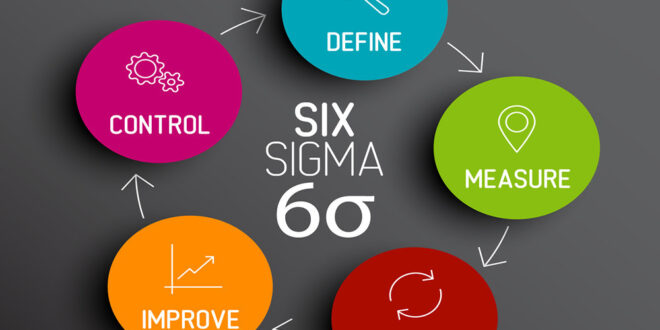Organisations always seek approaches to increase productivity, improve workflow, and spur expansion. The ITIL (Information Technology Infrastructure Library) and Six Sigma are two well-known approaches that are frequently considered. Both strategies, which each provide distinct approaches to process improvement, are widely used across many different sectors. We will examine the fundamental distinctions between ITIL vs Six Sigma in this post to assist you in selecting the best approach for the unique requirements of your organisation.
Understanding Six Sigma
A data-driven technique called Six Sigma aims to reduce errors and variability in operations. Six Sigma is a methodology created by Motorola in the 1980s that focuses on finding and removing the root causes of faults to improve the general calibre of goods and services. It uses the DMAIC (Define, Measure, Analyse, Improve, Control) organised method to take on current processes and boost their effectiveness. Achieving a level of process capacity where faults are constrained to a few instances per million chances is the main objective of Six Sigma.
Understanding ITIL
Conversely, ITIL is a collection of ITSM best practices that emphasises matching IT services to business requirements. ITIL is a framework of best practices that direct businesses to offer consumers high-quality IT services. Service strategy, design, transition, operation, and continuous service improvement are all covered by several processes and functions under the ITIL umbrella. Its mission is to guarantee that IT services are provided effectively and efficiently to achieve the organisation’s goals.
Key Differences
While Six Sigma and ITIL both strive to increase organisational effectiveness, they accomplish it in various ways and various fields.
- With a focus on reducing errors and variances, Six Sigma primarily aims to enhance processes in various industries, including manufacturing and services. Contrarily, ITIL is primarily designed for IT service management and focuses on efficiently delivering and managing IT services.
- To find and fix process inefficiencies, Six Sigma uses data-driven approaches and statistical analysis. In contrast, ITIL offers a thorough framework of procedures and procedures that direct IT service management through different phases of the service lifecycle.
- While ITIL provides a structured framework of procedures, functions, and stages for managing IT services, Six Sigma uses the DMAIC (Define, Measure, Analyse, Improve, Control) methodology.
- Six Sigma is extensively used in various sectors, from healthcare to manufacturing, where processes may be improved to lower faults and raise quality. As the name implies, ITIL is more applicable to organisations that rely substantially on IT services.
Choosing the Right Methodology
Think over the following elements to decide if Six Sigma or ITIL is the best fit for your company:
- Six Sigma could be a good option if your organisation’s main goal is to improve all processes, regardless of the industry. ITIL is more suited to your needs if your business deals mostly with IT services.
- The data-driven method of Six Sigma may be the best option if decreasing flaws, variances, and inefficiencies in your processes is your major priority. ITIL is the obvious choice if your main purpose is to offer IT services more efficiently and to integrate them with business objectives.
- Both skilled individuals and resources are needed for the implementation of any technique. Consider your company’s ability to train staff or recruit consultants skilled in the selected approach.
Conclusion
The industry, goals, and areas for development of your organisation will influence your decision between Six Sigma and ITIL. While ITIL gives a tried-and-true framework for IT service management, Six Sigma offers a complete approach to process improvement. You may make an educated selection that will result in more effective operations and improved customer satisfaction by assessing the particular demands of your organisation. The result is the same whether you choose Six Sigma or ITIL.
 HammBurg Be informed with latest news, reviews, entertainment, lifestyle tips, and much more.
HammBurg Be informed with latest news, reviews, entertainment, lifestyle tips, and much more.




